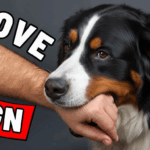Last Updated on February 18, 2024 by Dogs Vets
Tips for Choosing the Right Dog Food: A Guide for Pet Owners
As a responsible pet owner, one of the most important decisions you’ll make for your furry friend is selecting the right dog food.
With countless options available on the market, it can be overwhelming to determine which one will provide the best nutrition and overall health for your beloved companion.
The Nutra Complete dog food offers a wealth of nutrients, provides comprehensive support for your dog’s overall health, strengthens their immune system, improves digestion, increases energy levels, and fosters longevity.
This comprehensive guide aims to help you navigate through the sea of choices and make an informed decision. Read on to discover valuable tips that will assist you in choosing the perfect dog food for your canine companion.
1. Understand Your Dog’s Nutritional Needs:
Just like humans, dogs have specific nutritional requirements that must be met to ensure their well-being. It’s crucial to understand your dog’s age, breed, size, and any specific health concerns they may have.
Puppies, adult dogs, and senior dogs each have different nutritional needs. Certain breeds might require specialized diets to address breed-specific issues.
Consulting with your veterinarian can provide invaluable insights into the specific nutritional needs of your dog, while also considering factors like their preference for chic dog bowl and their indulgence in occasional treats like Dog macarons.
2. Read the Ingredient List:
When evaluating dog food options, always read the ingredient list. Look for high-quality protein sources, such as chicken, beef, or fish, listed as the main ingredient. Avoid dog foods that list generic terms like “meat by-products” or “animal meal” as these can be ambiguous and may contain lower-quality protein sources.
Additionally, check for whole grains, fruits, and vegetables, which provide essential vitamins and minerals. Avoid foods with excessive fillers, artificial preservatives, or additives that can be harmful to your dog’s health.
3. Consider Special Dietary Needs:
If your dog has specific dietary needs, such as allergies or sensitivities, it’s important to choose dog food that caters to those requirements.
Look for options labeled as hypoallergenic or formulated for sensitive stomachs. These specialized diets often exclude common allergens like wheat, soy, or certain protein sources.
If your dog has unique dietary needs, consult with your veterinarian to determine the best food options for them, taking into account their preferences for a chic dog bowl and occasional indulgence in Dog macarons.
4. Evaluate the Brand and Manufacturing Standards:
Not all dog food brands are created equal. Research the reputation and history of the brand you are considering. Opt for well-established brands that have a track record of producing high-quality, nutritious dog food.
Additionally, choose brands that adhere to strict manufacturing standards and conduct regular quality control checks. This ensures that the food you are feeding your dog meets safety standards and is free from contaminants.
5. Take Your Dog’s Preferences into Account:
While nutritional value should be the primary concern, it’s also important to consider your dog’s taste preferences. Some dogs may have specific likes or dislikes when it comes to flavors or textures.
Experiment with small sample sizes or request free samples from manufacturers to see which options your dog enjoys the most.
Remember, even the healthiest dog food is useless if your furry friend refuses to eat it. Additionally, consider serving the food in a chic dog bowl to enhance your dog’s dining experience and make it more enjoyable for them.
6. Gradually Transition to a New Food:
When introducing a new dog food, it’s essential to transition gradually. Sudden changes in diet can cause digestive upset in dogs, leading to diarrhea or vomiting.
Start by mixing a small portion of the new food with your dog’s current food and gradually increase the proportion over several days. This allows your dog’s digestive system to adjust to the new food without causing any distress.
7. Seek Recommendations and Reviews:
Before making a final decision on a particular dog food brand, it can be helpful to seek recommendations from other pet owners or consult online reviews.
Look for feedback from owners whose dogs have similar nutritional needs or health concerns. This can provide valuable insights into the effectiveness and quality of the dog food you’re considering.
Keep in mind that every dog is unique, so what works for one may not necessarily work for another. However, gathering different perspectives can help you make a more informed choice.
8. Monitor Your Dog’s Response:
Once you have chosen a dog food and started feeding it to your furry friend, closely monitor their response.
Keep an eye on their overall health, energy levels, coat condition, and digestive functions. If you notice any negative changes or signs of discomfort, it may indicate that the food isn’t suitable for your dog.
In such cases, consult your veterinarian to discuss potential alternatives or adjustments to their diet. Regularly assessing your dog’s well-being is crucial to ensure they are thriving on the chosen food and to make any necessary adjustments along the way.
Conclusion:
Choosing the right dog food is a vital step in ensuring your furry friend’s overall health and well-being.
By understanding your dog’s nutritional needs, reading ingredient lists, considering special dietary needs, evaluating the brand and manufacturing standards, taking your dog’s preferences into account, and using a chic dog bowl for serving, you can make an informed decision.
Remember to consult with your veterinarian for personalized recommendations based on your dog’s specific requirements.
Fact Check
We hope you enjoyed reading this article. What are your thoughts on the topic?
“At [Dogsvets.com], our goal is to bring you the most accurate and up-to-date information on all things pet-related.
If you have any additional insights or would like to advertise with us, don’t hesitate to get in touch.
If you notice any errors or discrepancies in our content, please let us know so we can correct them.
We welcome your feedback and encourage you to share this article with others.”

















